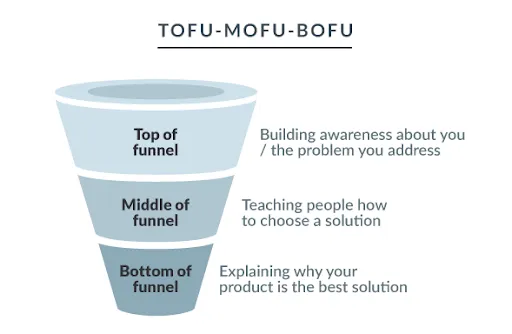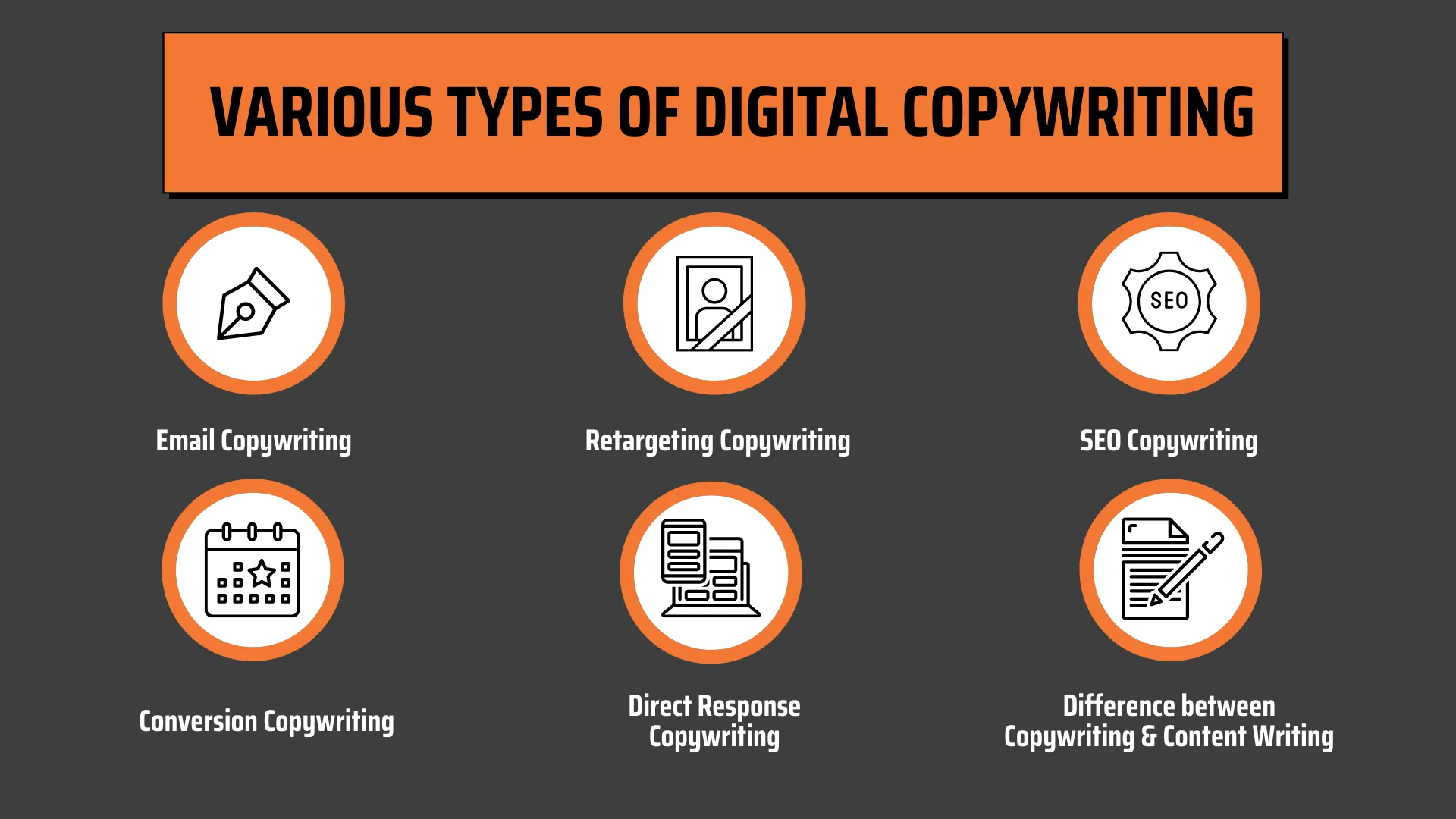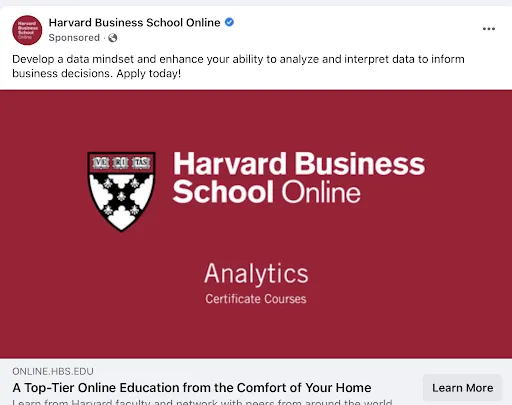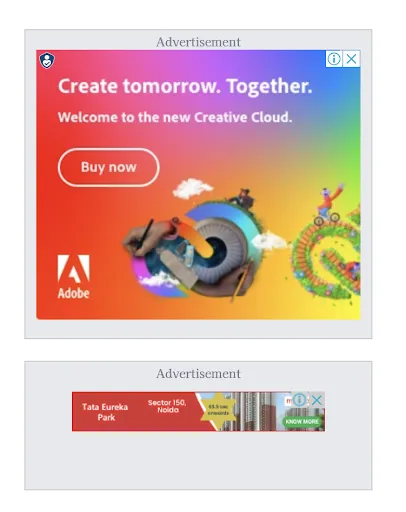Sales funnel copywriting is the art of writing your marketing sales funnel copy that prevails on customers to give you their hard-earned money.
In simple words, it is creating the language and structure of your sales funnel. It is a process of research and development of every step in your sales funnel.
Sales funnel copywriting is a marketing strategy used by many businesses to attract new leads, motivate potential visitors to become customers, and generate interest in their product/service.
A sales funnel copy starts with an introduction and ends with the prospect making the sale. You will need to use many types of copywriting between those stages to convince your visitors why they need to invest in your product or service.
To create a fruitful sales message for your marketing campaign, it is important to know what makes a sales funnel copy effective?
This article will focus on covering everything you need to know about Sales funnel copywriting.
We at SME site builder assure you that this is the only piece of content that you will need to read to know everything about Sales funnel copywriting. Let us begin with the procedure you need to write a catchy sales funnel copy.
- Do you want to increase the conversions on your Sales funnel with a compelling Sales funnel copy?
- What is sales funnel copywriting?
- How do you write a sales funnel?
- The Awareness Stage: TOFU
- The Consideration Phase: MOFU
- The Decision Phase: BOFU
- Steps to Write a Sales Funnel
- What is beginner copywriting?
- Email Copywriting
- Retargeting Copywriting
- SEO Copywriting
- Conversion Copywriting
- Direct Response Copywriting
- Difference between Copywriting and Content writing
- How do you write a catchy copy?
- Copywriting for Advertisements
- Copywriting for Landing Pages
- Copywriting for OTO Pages
- Copywriting for Webinars
- Copywriting for Downsells
- Copywriting for Follow-up Funnels
- How do you write a copy that sells?
- What Makes a Good Sales Copy?
- What is the difference between a marketing funnel and sales funnel?
- How can I get free funnel scripts?
- Final thoughts
How do you write a sales funnel?
Most of the prospects that visit your website consume at least 3-5 pieces of content before they come in contact with your sales rep. This is why it is important to pay attention to the tone, word choice, and writing to fit your customers’ needs.
To understand this better, we will share three main stages, and content tips of a typical sales funnel.
1. The Awareness Stage: TOFU
When the prospects visit your site for the first time, they are not aware of the features that define your brand. They are there looking for information that can solve the problems in their daily lives.
When writing content for this stage, you need to keep the following things in mind:
- Build Credibility: Your content should be credible in the eyes of the buyers. The key is to focus on writing content that establishes your brand as an authority. Make sure to mention everything that displays your expertise in the industry. This can be done through blog posts and social media posts.
- Showcase your Brand voice: Another important thing is to keep an authentic and consistent brand voice with your unique way of storytelling. Add a touch of your personality to the copywriting.
Your goal should be to get new visitors to opt into the newsletter. When someone enters your newsletter mail list, they get transferred to the middle of your funnel.
2. The Consideration Phase: MOFU
The consideration phase is the middle part of the funnel, where your prospects look deeper into your brand to compare you with multiple businesses. This is the right time to give them more resources to help them make the final buying decision.
During the Middle stage, you should not force a sales pitch down the consumer's throat quite yet. The focus should be on giving more in-depth benefits and features of your product/service.
This can be done through case studies, customer testimonials, and how-to guides that explain how your service works. You can also craft a FAQ page with all the common questions surrounding your brand.
3. The Decision Phase: BOFU
The prospects that make it to the bottom of your funnel are higher quality leads for your brand. This is because they have a lot of information about your brand, and they are even thinking about making the purchase decision.
This is the best time to give them a final push, so they feel motivated to spend their money on your brand.
When writing for the bottom stage of the funnel, your content should include the following things:
- Calls-to-action: CTAs are one of the most effective marketing tactics to boost sales letters and increase conversions. You can also use them to make visitors sign up for free trials or get a discount code.
- Establishing Social Proof: When the visitors are at the cusp of making the purchase, pull the final trigger by showcasing them with testimonials of your happy customers.
- You can also maximize the profits from each customer by selling them more services or products.
- Pop-ups that give certain discount offers can also help you convert more visitors into customers.
Now you know of the basics of compelling sales funnel copywriting and the funnel stages. Let us look at various steps you need to take to write a sales funnel that converts.
Steps to Write a Sales Funnel
1. Determine and establish the objective of your sales funnel
Most sales funnels serve a specific objective of the business. Your first step should be to fully understand that goal and strategize the steps you need to fulfil that goal.
2. Research your audience
It is necessary to spend intensive time researching the customers you target.
You should know your targeted customers on a holistic approach. These things include what they like to eat, their favourite television shows, or what they do to make a living.
Some methods that you can use to do this research on your audience are:
- Surveys
- Interviews
- Observation
3. Determine the method that you will use to generate leads
You can use various ways to generate leads for your business; some of them are organic while others are paid.
Organic methods:
- Non-paid social media traffic
- Search engine optimization
- Outreach
- Direct traffic
Paid methods:
- Social media advertisements
- Influencer marketing
- Affiliate marketing
- Google Adwords
What is beginner copywriting?
Copywriting is the art of writing simple text used for the purpose of marketing. An example of copywriting is the sales copy that aims to increase brand awareness.
There are various types of digital copywriting like email copywriting, SEO copywriting, etc. Let us take a quick look at some commonly used digital copywriting forms.
Email Copywriting
Email copywriting is all about sending emails to your leads to sell services or products.
It is one of the most widely used techniques in digital marketing with High ROI. Email copywriting usually consists of different formats and campaigns that target different results.
A few examples of Email Copywriting are described below:
- Newsletter: Brands send weekly or monthly updates about their services to the customers to build a relationship and establish trust.
- Lead Nurturing: To nurture leads, you can send a bunch of emails to move warm leads to the final payment page.
- Welcome Email: Whenever new prospects sign up for your mailing list, you can send them a welcome mail to introduce yourself and increase trust.
- Automatic emails: You can set up automatic email responses that will be activated by certain behaviours of your customers. These can include downloading an ebook or signing up for a webinar.
- Re-engagement: This type of copywriting can be used to reconnect with the cold leads who have exited the funnel before making the purchase.
- Promo: This refers to the emails sent to promote a new product or service to existing customers.
To be highly skilled in email copywriting, you will have to focus on these things:
- Capture the voice of your brand consistently
- Structure emails with call-to-action triggers
- Run A/B tests and analyze results to increase ROI.
- Stay updated about the new trends of your industry.
- Divide your email lists into categories: Cold leads, Warm leads, Frequent customers, etc.
Retargeting Copywriting
In Retargeting copywriting, brands run paid social media advertisements with the aim to reconnect with the customers that don’t convert.
Most people that visit your website for the first time will not end up paying for your service instantly. You need to retarget them with new tactics to turn those warm leads into paying customers.
Some techniques used to retarget customers are described below.
- Persuasive Language: Use phrases like “Forgot something”, “Limited Stock”, and “Free delivery charges” to convince customers, so they place the order.
- Call to action phrases like “Buy Now.”
- Targeted audience: People who are already interested in your product/service.
You can set up ads with the aforementioned techniques to get customers back on your website.
SEO Copywriting
Search engine optimization (SEO) Copywriters aim to improve the google ranking of your website so that it gets more visits. It is all about writing so that Google prioritizes it better than the other competitors.
A lot of people think that SEO is all about keyword stuffing, but that is not the whole truth. You also need to pay attention to things like Engagement, Readability, Headlines, Backlinks, Authority, etc.
When you write a good piece of content with keeping all these things in mind, there is a good chance that Google will rank it higher than the rest of the websites.
Conversion Copywriting
Conversion copywriting is the art of marketing with the aim to maximize the number of visitors taking the desired action of your choice.
This action can be:
- Clicking on a link
- Purchase conversions
- Signing up for newsletter
- Filling up a survey
- Sharing Content on social media platforms
- Signing up for a webinar
When writing a conversion copy, the focus should be on the following things:
- Target Market Research
- Writing, integrating product/service, and editing
- Validating and Testing marketing strategies
Direct response Copywriting
Direct response copywriting is similar to Conversion copywriting. Both aim to prompt a response or conversion.
The only difference is that conversion copywriting is linked to digital marketing, while direct response copywriters need to have experience in traditional marketing processes.
Difference between Copywriting and Content writing
A lot of people get confused between copywriting, and content writing since both fields are closely linked to each other.
The major differences between both types of writing are described below.
- Purpose: Content writing is used to build authority and establish trust in your brand while on the other hand, copywriting is generally used to sell or convert the audience.
- Analytics: Content writers job is to prepare a long-term strategy to build evergreen content for the business while copywriters write after studying data related to an ad, email campaign, or any other short term plan.
- Word count: A copywriting project is usually a short term writing for an ad, email campaign, landing page, etc. Content writers do the job of preparing value-driven content for a blog, article, ebook, etc.
There are many writers that work across both contents writing and copywriting since both have a similar nature and are both needed for the growth of your online business.
How do you write a catchy copy?
If you want to write a catchy and compelling copy for your sales pages, you will have to follow some basic rules so the customer:
- Shows interest in your product or service.
- Feels the need to spend their hard-earned cash on your website.
We have prepared a list of things you can do to ensure that your sales copy is catchy. Let’s have a look at them one by one.
Copywriting for Advertisements
Advertisements are used to get paid traffic on your website. It is important to provide the right information in the ad copy to convince people that your offer is the best they can find.
If you don’t write an effective ad copy, you could waste a lot of money and time. This can be avoided if you follow the tips provided below.
- Know your Target Audience
Prepare research on the people you are selling to and their requirements? Put yourself in the customer’s place and think of the offer from their perspective. This will help you to give them a solution that sells.
The research should also include demographic data and other information like age, location, hobbies/interests, job, income, etc.
This way, you will be able to write content for your targeted age group since it would make no sense to use formal language in a copy meant to target teenagers. The first step is to know your customers!
- Know your USP
You should be aware of the unique selling point of your brand. It can be anything that makes your brand better than the other competition. This point should be highlighted in your advertisement copy.
- Headline
Most people that come across your ad copy end up skipping it without even reading the complete text. This is why it is important to pay extra attention to your headlines. The headline should be powerful enough to hook the customers to your brand.
- A clear call to action
You should always integrate a convincing call to action button in your ad copy. This ad button can be, “Try the 14 Day free trial here” or “Shop now”. These messages make the potential customers aware of what will happen when they click the button.
- Be your customers’ best friend.
When you build a personal relationship with your audience, it is easier to buy from your brand. You can do this by using informal words like “you. Try to make your audience feel like you are speaking to them personally. The best ad copy can be written if you treat the customers with dignity and respect.
- Express emotions
Emotional words can be used to trigger certain emotions in your reader. Your ad copy should stay in the potential customer's mind for as long as possible. We have already discussed the benefits of using persuasive language. All you need to do is understand the power of certain words and learn to integrate them into your content.
- Make use of Statistics and numbers.
Adding statistics or numbers in your ad copy makes people trust your brand more easily. Just make sure to support the statistics with a more approved source.
Also, make sure not to add too many numbers since it can make readers suspicious about your brand. The balance is key.
- Be your own critic
Always think of why customers would skip your ad copy and look for counterarguments. This will help you to optimize the ad copy even further.
- Classify what kind of ad?
Firstly, you need to be aware of the kind of ad copy you are writing for.
Is it a search ad, a Facebook ad, or a banner ad?
We have classified different kinds of ad copy along with their examples below.
1. Google advertisements
Brands pay google to display advertisements in the search results of people that search for certain keywords. If you want to use google ads for your online business then, make sure to prepare a powerful meta headline, slug, and description.
Some examples of google ads are:
2. Social media advertisements
Social media advertisements are used by brands who want to gather paid traffic from social media platforms like Facebook, Instagram, youtube, etc. The main benefit of setting up ads on these social media sites is that they already have a massive user base.
You can use social media ads to reach millions of prospects. These ad platforms also offer you detailed targeting based on keywords, interests, age group, demographics, etc.
Some examples of convincing social media advertisements:
When writing for social media ad copy, you will need to use keywords and call-to-action buttons. You can also perform A/B testing on your ad copy to optimize it and increase your RTO (Return on investment).
SME Site builder comes with an inbuilt advanced AB testing feature that can do wonders for your business. You can sign up for the 14 Day free trial here.
3. Banner advertisements
Banner ads are also a classic form of online advertisements that you can use to display your brand message online. You can show your graphics in a banner advertisement such as videos, buttons, animation, gifs, etc.
Examples of Banner ads are:
Copywriting for Landing Pages
When users click on your ad, they are redirected to your landing page. A Landing page is the primary page of a sales funnel.
This is the place where you need to show your creative copywriting skills.
The most effective way of writing for a landing page is to be concise. Being concise here is key because the prospects that you are targeting are busy.
The meaning of concision is to make your point quickly, using fewer words. Using concise copywriting for a landing page results in a more clear message.
Some common mistakes that sales funnel copywriter make while writing for landing pages are mentioned below:
- Use of too many adverbs (Actually, easily, obviously, etc.)
- Use of Passive voice
- Use of too many determines or modifiers
- Lack of proper editing
Avoid these common mistakes, and your landing page copy will turn out to be just fine.
Copywriting for OTO Pages
Some businesses choose to add OTO pages in their sales funnels. OTO pages aim to increase the average order value of any sales funnel. It stands for One time offer- an upsell pop up with high-conversion rates.
Copywriting process for OTO pages is systematic and straightforward:
- Make sure to use words like “Wait” or “Limited time offer” in the headline to grab the visitors’ attention.
- Keep the copy small and to the point. Only a couple of value-driven paragraphs about the product will do the job.
- Lastly, add any call to action like “Yes! Sign me up for the emailing list”.
Copywriting for Webinars
Many businesses and individual entrepreneurs use webinars to grow their email list, build brand authority and qualify the leads automatically.
When writing copy for webinars, the fundamentals you need to follow are provided below.
- Keep a narrowly targeted audience to get the best conversions from your Webinar copy. Use headlines and topics accordingly.
- Follow a logical introduction that includes Introduction, Credibility, Backstory, Offer details, testimonials, bonuses, call-to-action.
- Give away your best stuff for free. If you give your audience plenty of compelling reasons, you will ultimately receive a higher conversion rate.
Copywriting for Downsells
Downsells are used to offer the customers a better deal when they reject your OTO.
When writing for a down-sell, you need to reiterate the value of your offer to the customers to convince them. You can add phrases like “We don't want you to miss out, so here is the best deal” in the headline.
The call-to-action buttons in a down-sell copy should be like, “Alright, I’m in!”
Copywriting for Follow-up Funnels
Lastly, let us now look at the copywriting process for Follow-up Funnels.
Follow-up funnels are the emails sent to prospects who abandon their cart before making the final purchase on your website.
All you need to do is write an email that reminds the prospect to complete their payment.
How do you write a copy that sells?
Traditional sales funnels succeed when the buyer completes the journey and makes the final payment without exiting your sales funnel.
This journey comprises four stages: Awareness, Interest, Decision, and action.
To create a copy that sells, you need to ensure that your copy triggers all the sales funnel stages. Let us take a look at the definition of each stage.
Awareness- At the awareness stage, the prospects are made aware of your brand and what you have to offer. Initially, most brands use search engine ads and social media ads to raise awareness about their product or service. You can also use informative blog posts and social media posts to raise awareness.
Interest- The audience gets actively interested in your product or service at the second stage. This is when they subscribe to your newsletter or follow your social media handles. You can add product demonstration videos or testimonials to.
Decision- This is the point where the prospect gets convinced to invest in whatever you are offering. It is also when they will start comparing the deal with the other competitors. Offers, Guarantees, Cost estimates, case studies and customer testimonials are some strategies that can be used at this stage to increase conversions.
Action- Lastly, when the customers have placed an order on your website, your aim should be to keep them a part of your ecosystem for as long as possible. You can retain customers by sending them offers and discounts for the other services you launch in future.
What Makes a Good Sales Copy?
Let us now have a quick look at some of the best copywriting tips that you can use to write an overall good sales copy.
Tip #1- Make Sure to keep the Sales funnel copy as simple and compelling as possible
Tip #2- Present the benefits creatively rather than listing features.
Tip #3- Include customer testimonials on the landing page.
Tip #4- Offer a money-back guarantee if possible.
Tip #5- Spend some time writing compelling headlines.
Tip #6- Answer the frequently asked questions in your sales copy.
Tip #7- Add video content to your sales copy.
Tip #8- Generate urgency in your customers by adding a sales countdown.
Tip #9- Make sure that the copy is not too salesy.
What is the difference between a marketing funnel and sales funnel?
The marketing and sales funnel are closely related terms that often raise unwarranted confusion. Let’s end this confusion for you.
The goal of a marketing funnel is to generate many visitors and convert them into qualified leads. It is a series of work-related processes that engages the audience with the relevant content.
A sales funnel is a cone-shaped marketing funnel that lets you take the prospect from the takeover stage (marketing) to conversion. When the prospects develop an interest in your brand, they enter the sales funnel.
How can I get free funnel scripts?
Sales funnel scripts are SaaS platforms to help you build your sales funnel.
If you want to build a high-quality sales funnel that generates many leads, you will have to invest in a good SaaS platform.
We are here to help. SME Site builder is an advanced website and sales funnel builder built into one. It makes it extremely easy for anyone to set up a sales funnel with drag and drop options.
You get to choose from over 200 High-speed sales funnel templates, and you also get all the other advanced features that we talked about, like Advanced A/B Testing, OTO pages, Downsells, email marketing and many more.
You can click here to start your 14 Day Free trial with SME Site builder. (No Credit Card required).
Final thoughts
If you’ve made it this far, you’ve got a pretty good understanding of how to write a catchy sales funnel copy. You can use the mentioned tips and tricks to convert prospects into paying customers. But don’t stop at mere understanding.
Start creating sales funnels and implementing these tips for your online business today with the 14 Day free trial of SME Site builder.
Thanks for reading, and please subscribe to our newsletter for more Awesome content!








